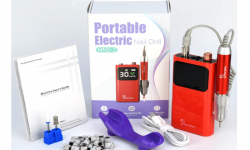Techniques evolve, hearing aid devices are today more effective and more aesthetic. There are different types, depending on the expectations of each person. How to choose ? What options are available? We makes an overview.
One thing is certain: it is not by depriving oneself of a hearing aid that one can force one’s ear to exercise. When we notice a decrease in hearing, we must react! Fatalism is no longer a de rigueur, solutions exist, you choose the one that suits you best! Be careful, hearing aids will not give you a perfect ear.
The functioning of the hearing
The sound vibrations are concentrated by the flag towards the auditory canal where they will hit the eardrum . The eardrum vibrates, leading in turn the ossicles : hammer, anvil and stirrup. These smaller bones of the body support and organize the sound to amplify and facilitate its passage to the inner ear , filled with fluid. The sound wave oscillates some 3,000 microscopic cells lining the cochlea spiral. These movements are converted into nerve impulses transmitted to the brain , which interpret them.
When to use a hearing aid?
When this system fails, hearing problems appear . The hearing aid is a device that aims to correct these disorders . It is your ENT who, after having examined you, will write a prescription to address you to one of the 3,600 hearing care professionals.
Degrees of deafness
The loudness is measured in decibels. Hearing loss occurs when the ciliary cells become damaged or die. This phenomenon can be amplified by auditory trauma. Depending on the loss of decibels, deafness is not the same :
<-20 dB : normal hearing;
-20 to -40 dB : slight deafness, loss of low and high noise;
-40 to -90 dB : severe deafness, lip reading or re-education;
> 90 dB : profound or even complete deafness.
In a loud noisy environment, like a casual conversation or in a restaurant, a hearing impaired person will get tired quickly . Because the prosthesis amplifies the sound, all the sounds that reach it. However, even if the comfort is not complete, the device allows its users to participate more in the social life .
Thanks to earlier screening, children with hearing loss can be paired without delay, and attend school like peers of their age .
Hearing aid adapted to the importance of his disability
The audiologist after you have received and process of audiometric testing , take the imprint of your ear canal . To make a prosthesis, it has a choice among nearly 400 references manufactured by 16 brands.
A prosthesis consists of three elements : a microphone, the body of the prosthesis , which adapts the sound to the type of deafness of the individual, and a speaker that restores the sound, not to mention the battery that powers the device.
BTE – Behind the Ear Hearing Aid
The behind the ear hearing aid are placed behind the ear. A small tube leads to a mouthpiece that lodges in the hollow of the ear . It is recommended for all types of deafness, mild as deep.
ADVANTAGES
At present, it is the most common and most effective type of prosthesis . The BTE is also more resistant to water and excess earwax . It is also easy to handle and suitable for people with more severe hearing loss or a small ear canal. In addition, the batteries last longer.
DISADVANTAGES
The BTE will always be visible , which is sometimes hard to accept by the paired people.
Intra-auricular and intra-conch
The intra-auriculars are divided into the intra-ducts that are placed, as its name indicates, in the duct, and intra-conches that are positioned at its entrance. Smaller and flesh-colored, they are more discreet.
ADVANTAGES
These in ear hearing aids are very discreet , almost invisible. They are easy to handle and there are many functions to suit their needs.
DISADVANTAGES
This type of hearing aid is more sensitive to wind noise . It is also less resistant to ear wax and ear moisture. In addition, these hearing aids are not suitable for all hearing losses, they are more suitable for those low to medium.
The open micro-contour or remote earpiece
The auditory canal is ventilated to avoid any occlusion effect and allows natural frequencies to pass naturally. The open micro-contour consists of an earpiece and a housing located behind the ear flag. A wire leads the sound into the ear. In the case of the remote earpiece micro-contour, the earpiece is placed in the ear canal.
ADVANTAGES
It perfectly matches the slight hearing loss s . It is comfortable and the adaptation is fast. It has a large autonomy.
DISADVANTAGES
Being located behind the ear, it remains visible and it can interfere with the wearing of glasses.
The cochlear implant
The cochlear implant is an electronic medical device presented as an alternative when hearing aids do not allow the understanding of speech. It includes an audio processor connected to the implant located under the skull . In this case, several electrodes introduced into the cochlea directly stimulate the fibers of the auditory nerve.
In 1996 we moved from analogue to the digital age. Before the sounds were converted into electrical signals; with the new process the sound is digitized. In other words, it is transformed into a series of numbers that is processed and analyzed by an algorithm.
ADVANTAGES
In some cases, conventional devices may not be sufficient for some cases of profound deafness . When the inner ear is reached , the cochlear implant, comparable to an “artificial inner ear” , can provide an answer .
The different types of sounds can be distinguished (background noise, conversation), the comfort of listening is amplified. Almost all of the hearing aids sold today are digital.
DISADVANTAGES
Its implantation requires surgery under general anesthesia . The time of adaptation can be sometimes long and the disconcerting sensation, a psychological help which can be necessary. Moreover, if the sounds emitted in calm are well assimilated, it is not the same for a conversation in a noisy environment or listening to music for example, which can be difficult for the implanted person.
The middle ear implant
The middle ear implant consists of an audio processor and an ossicular prosthesis attached to an ossicle . The wave will be transmitted to him according to the sounds perceived by the processor.
ADVANTAGES
It is indicated in case of deafness of transmission, perception or mixed deafness, moderate to severe degree (40 to 90 dB loss) but also for people with anatomical malformations of the outer ear making them poorly adapted to benefit from the technology of the usual hearing aid.
DISADVANTAGES
The installation requires a fairly long and technical operation .


